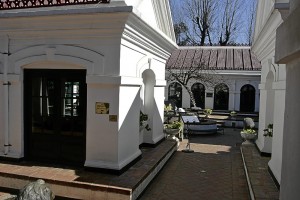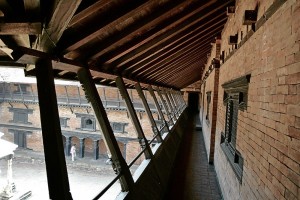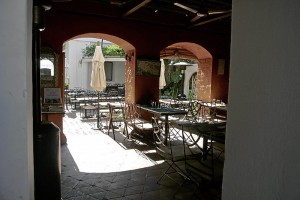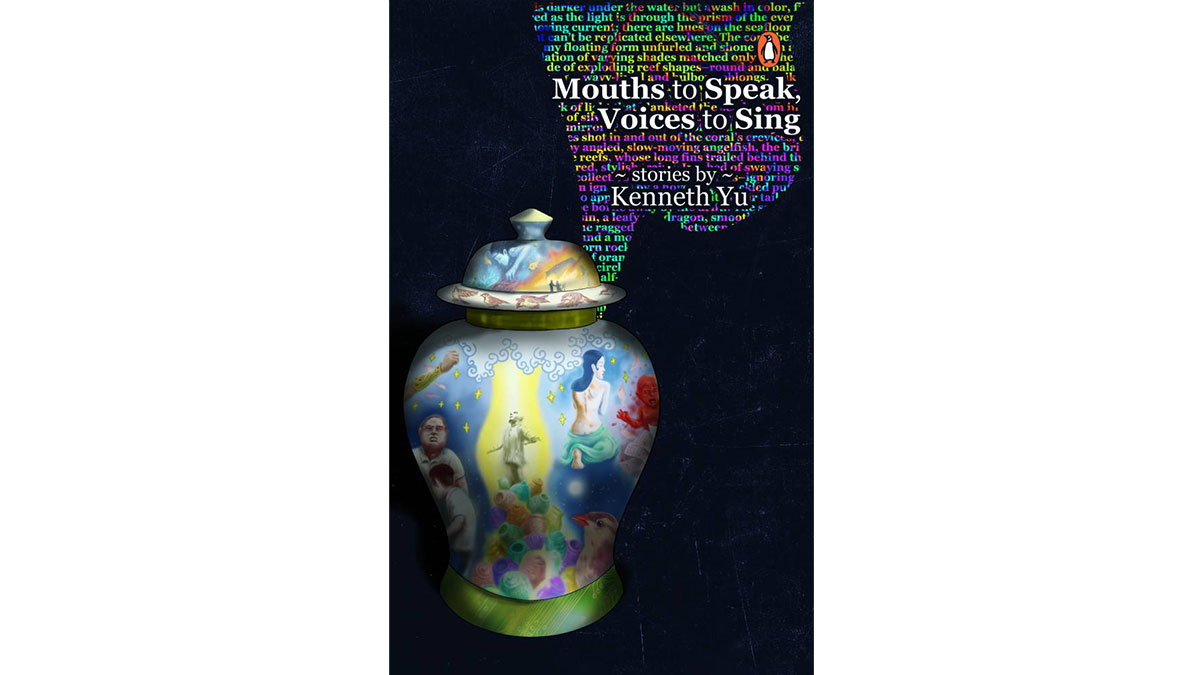
We imagine Kathmandu as a city nestled in clean, verdant green valley, whose temple-framed vistas take the eye all the way to the snow-capped Himalayas beyond, once the Shangri-La of hippiedom.
Time marches on. The first hippies who came to Kathmandu matured and got on with their lives; some of those who didn’t, are still in Kathmandu.
Freak Street is what locals call the road where hippies hung loose in those smoky days. Today bed-and-breakfasts, cheap places to eat, and souvenir shops line both sides of the nondescript street.
Nondescript is the city that Kathmandu has become.
Gone is Shangri-La, nature and clean air. Kathmandu still maintains its character of being a city of narrow roads punctuated with temples and religious monuments on tiny plazas strung along a network of narrow, dusty and badly rutted streets that are difficult to navigate since everyone—buses, cars, motorbikes, people, and hawkers—is on the street at the same time.

Streets and the occasional sidewalks are so uneven that walking is an act that takes full concentration to keep from twisting an ankle.
Air is dusty, polluted to the max with the fumes from gensets that establishments and families run to cope with regular power outages during the day or night.
Noise? It’s everywhere. Painted on the rear of buses and trucks is the request, “Horn, please,” and judging from the level of street noise, it seems like, as soon as a Nepali driver closes the door of his vehicle or rides his bike, he reaches for the horn.

Don’t get me wrong, though. Kathmandu is a city that intrigues, inviting its visitors to dig beneath its chaotic exterior. There is more to Kathmandu than what you see.
Beneath the surface
The reward for those who take the time to look beneath the surface is the discovery of an ancient city of history and charm; of living traditions that continue despite an ache for modernity; and the gentleness of the Newari people make one feel at home despite truly challenging surroundings.
Because of the stress that today’s Kathmandu is, escape valves are absolutely essential for recharging, and I have found a few.
Newa Chen is a 300-year-old house in the heritage city of Patan that is a recent Unesco Asia-Pacific Cultural Heritage awardee. Built of brick in the ancient Malla style, the house was repurposed by its owners as a bed-and-breakfast while scrupulously maintaining all of its heritage qualities.
Its exposed-rafter ceiling is low (Newaris are not tall people, says the owner); doors are equally low that you have to stoop to pass through; and marvelous wood-carving work everywhere.
Life in Newa Chen is lived Newari-style—on the floor. Floor cushions ring low tables; mattresses on the floor are for sleeping. Rooms are showcases of everything traditional, from tapestries to weaving, and even the heavy, fiber-filled duvets on the beds. It’s living another world, being in Newa Chen.
Located beside a small plaza opening out to one of the wider roads right outside the World Heritage Zone boundary of Patan, Newa Chen has a jewel of an inner courtyard, a sanctuary where trees and plants block out the dust and noise of Patan.

Morning ritual
Even in winter, having breakfast by myself, all bundled up in the sunny garden gazebo of Newa Chen surrounded by lush plants, was a morning ritual to start my day off. It was a bit of quiet time before rushing into the mad pace of Kathmandu.
A few minutes’ walk from Newa Chen is Patan Museum, once the royal palace whose imposing façade encloses one side of Patan Durbar (Royal) Square.
The museum itself and the collection are outstanding, totally worth a visit, but the private garden in the rear is the real urban jewel.
Shut out from the noise of Patan Durbar Square, the landscaped garden is a place for strolling, catching the sun on cold winter days, and having a quiet outdoor lunch.
Another historic complex of buildings that has been repurposed for new use is Baber Mahal Revisited. Formerly a cowshed and guardhouses across the street from the magnificent Rana Palace that burned down, the complex is among the recipients of the Unesco Asia-Pacific Cultural Awards.
Interior courtyards interconnect to reveal upscale boutiques where the best traditional crafts and antiques are available. Boutiques and design studios display dazzling contemporary industrial designs.
At Baber Mahal Revisited are probably the best restaurants in town: Nepali, Japanese, French. This is a place where taking a cup of coffee on the terrace is encouraged. This is also the place to go to when your palate needs that recharge of comfort food after days of rich Nepali cuisine.
Diving head-on to experience a new culture while traveling is the way to maximize the learning experience.
I have found, though, that the learning experience quickly goes into overload, and to maintain a balance, short escapes into the familiar are essential.
E-mail the author at pride.place@gmail.com.











































